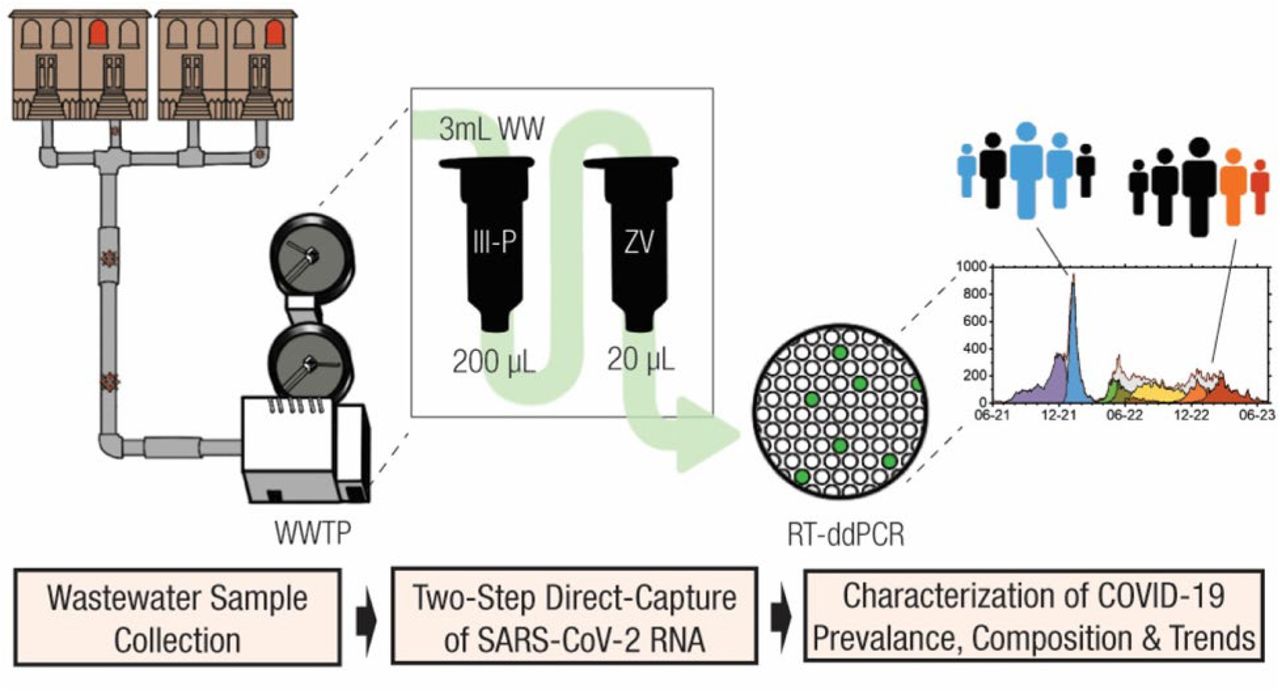Wastewater Monitoring
An interesting preprint by Balogh et al., 2024 presents a comprehensive approach to wastewater-based epidemiology (WBE) for SARS-CoV-2 surveillance. Conducted over 32 months at a major metropolitan wastewater treatment plant, the study demonstrates the efficacy of combining a novel RNA extraction method with reverse transcription-droplet digital PCR (RT-ddPCR) and targeted mutation assays to monitor viral load and variant dynamics in the community.
This study combined the following approach(es) to assess the viral/variant dynamics in the community:
- Two-Step Direct Capture RNA Extraction -> Integration with RT-ddPCR to monitor for absolute quantification of viral RNA
- Targeted Mutation Assays to delineate between different SARS-CoV-2 variants circulating in the population
- Longitudinal Surveillance period ensured a comprehensive view of viral load fluctuations and variant dynamics

source: Balogh et al., 2024, Graphical abstract
This study highlights the potential of RT-ddPCR-based wastewater surveillance as a powerful tool for public health monitoring. Specifically, it can:
-
Monitor Infected Populations: By quantifying viral RNA in wastewater, health authorities can estimate infection levels in the community, including asymptomatic cases.
-
Delineate Circulating Serotypes: Targeted mutation assays enable the identification and tracking of SARS-CoV-2 variants, informing on the spread and dominance of specific strains.
-
Predict Outbreaks: Early detection of increases in viral load or the emergence of new variants can serve as a warning system, allowing for timely interventions.